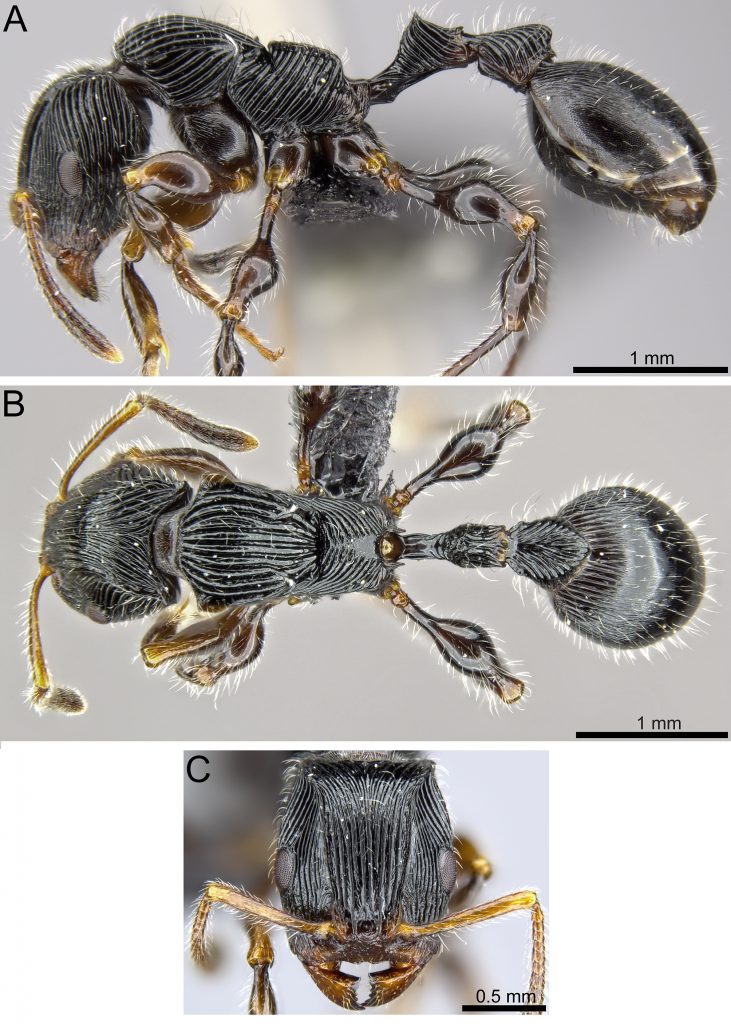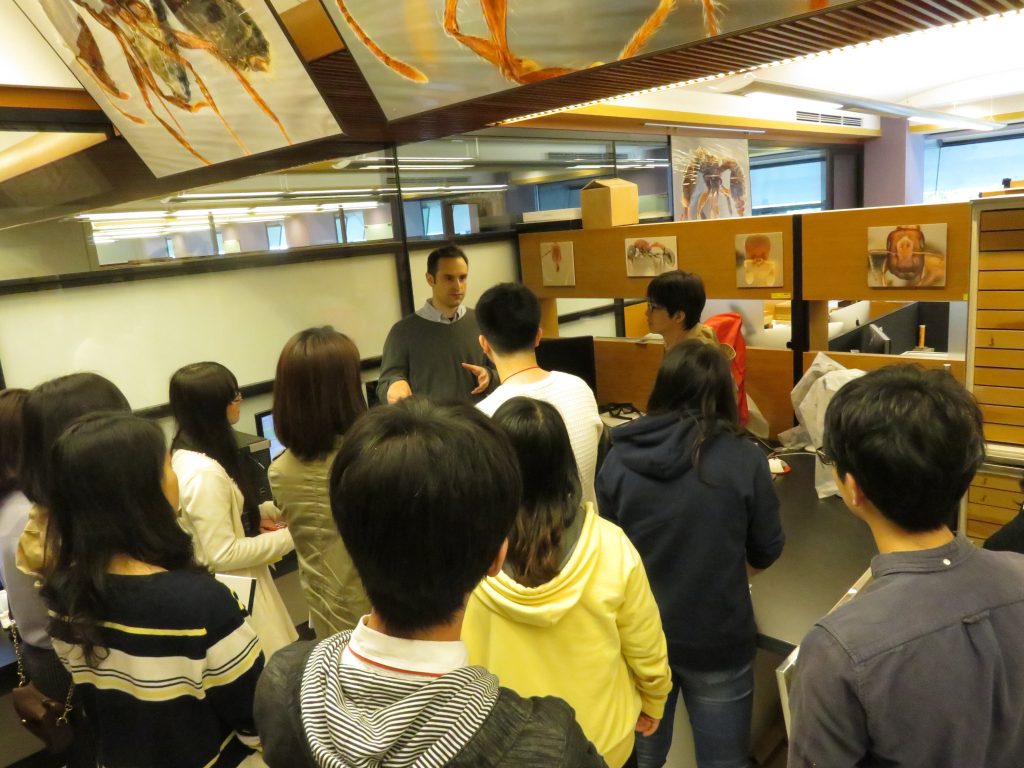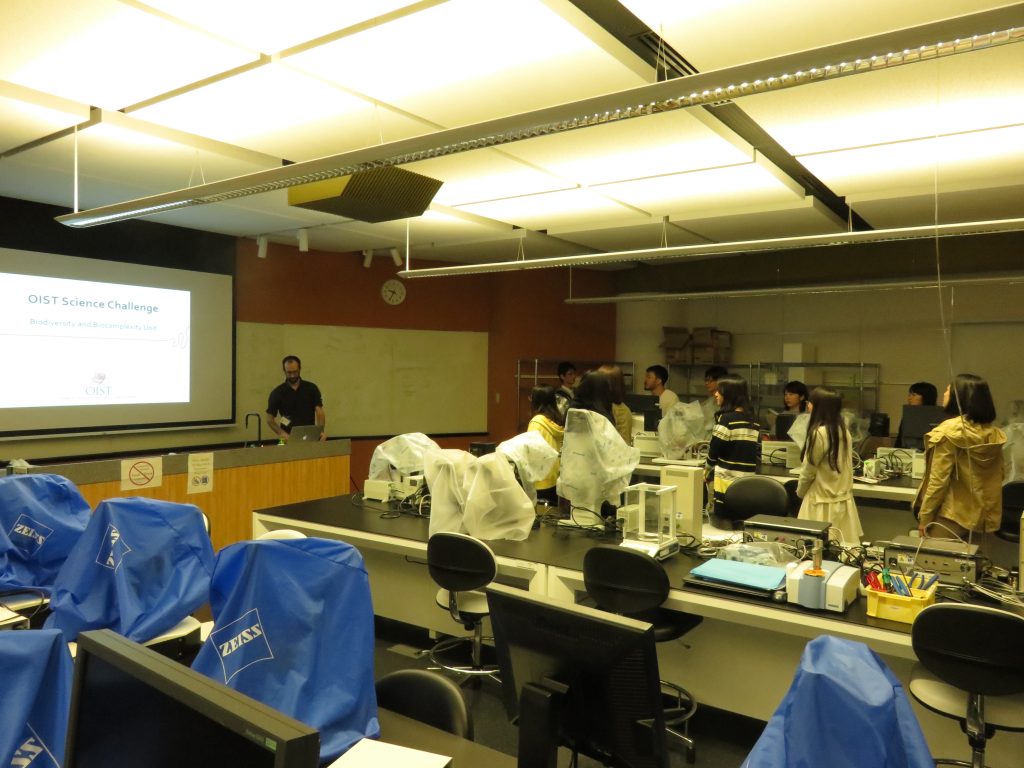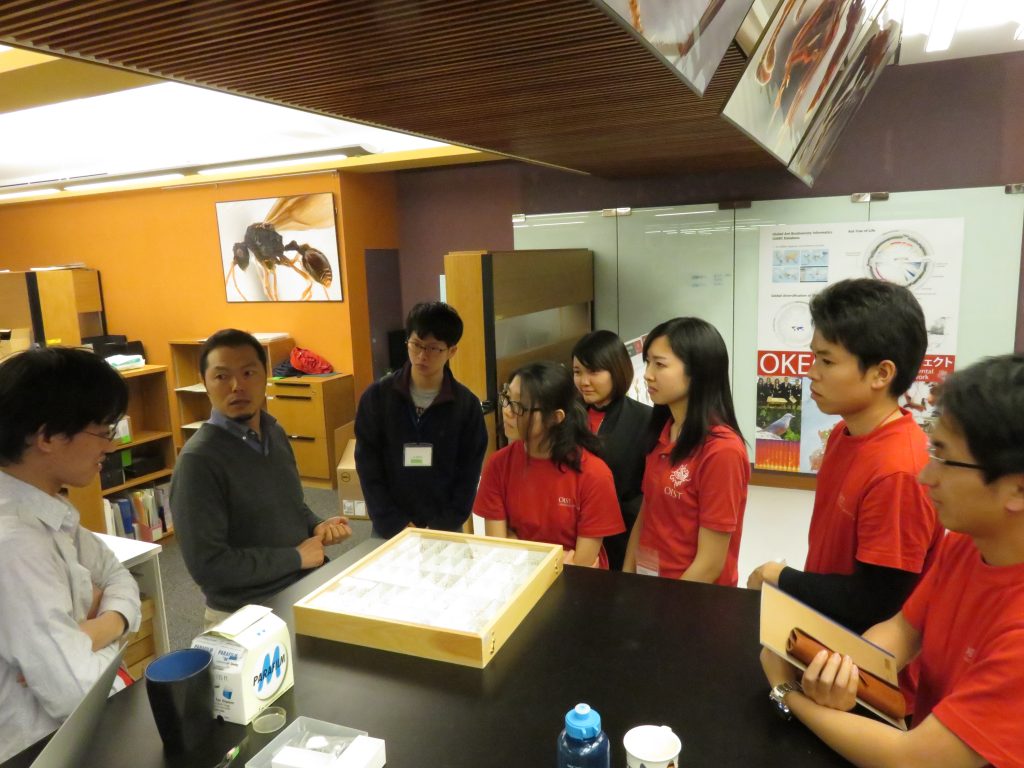How would you like to be in the same room as an ant the size of a horse? In reality that’s a ridiculous idea, but in augmented reality anything is possible. This week, OIST’s Biodiversity and Biocomplexity Unit tested a new augmented reality device: the Microsoft HoloLens. Pavel Puchenkov of OIST’s Scientific Computing & Data Analysis Section designed a demonstration using a 3D-scanned model of the newly discovered ant species, Pheidole drogon. With the HoloLens, researchers were able to explore this species’ exceptionally spiny shape.

The view from the HoloLens. Paco Hita Garcia and Sam Ross can’t
actually see the ant, but it all looks very dramatic
While the applications available for the HoloLens are currently limited, the opportunities quickly become apparent. The ability to display holographic renderings of specimens in 3D has the potential to turn any room into a stunning museum exhibit. It’s clear that this technology has the potential to create or enrich experiences that we can use to communicate life’s diversity and evolutionary history.
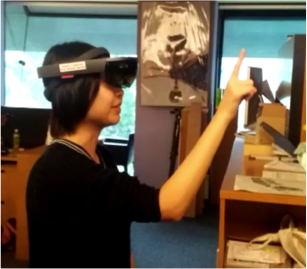
Ph.D. Student Yuka Suzuki interacting with objects in augmented reality.
Post written by Nicholas Friedman

